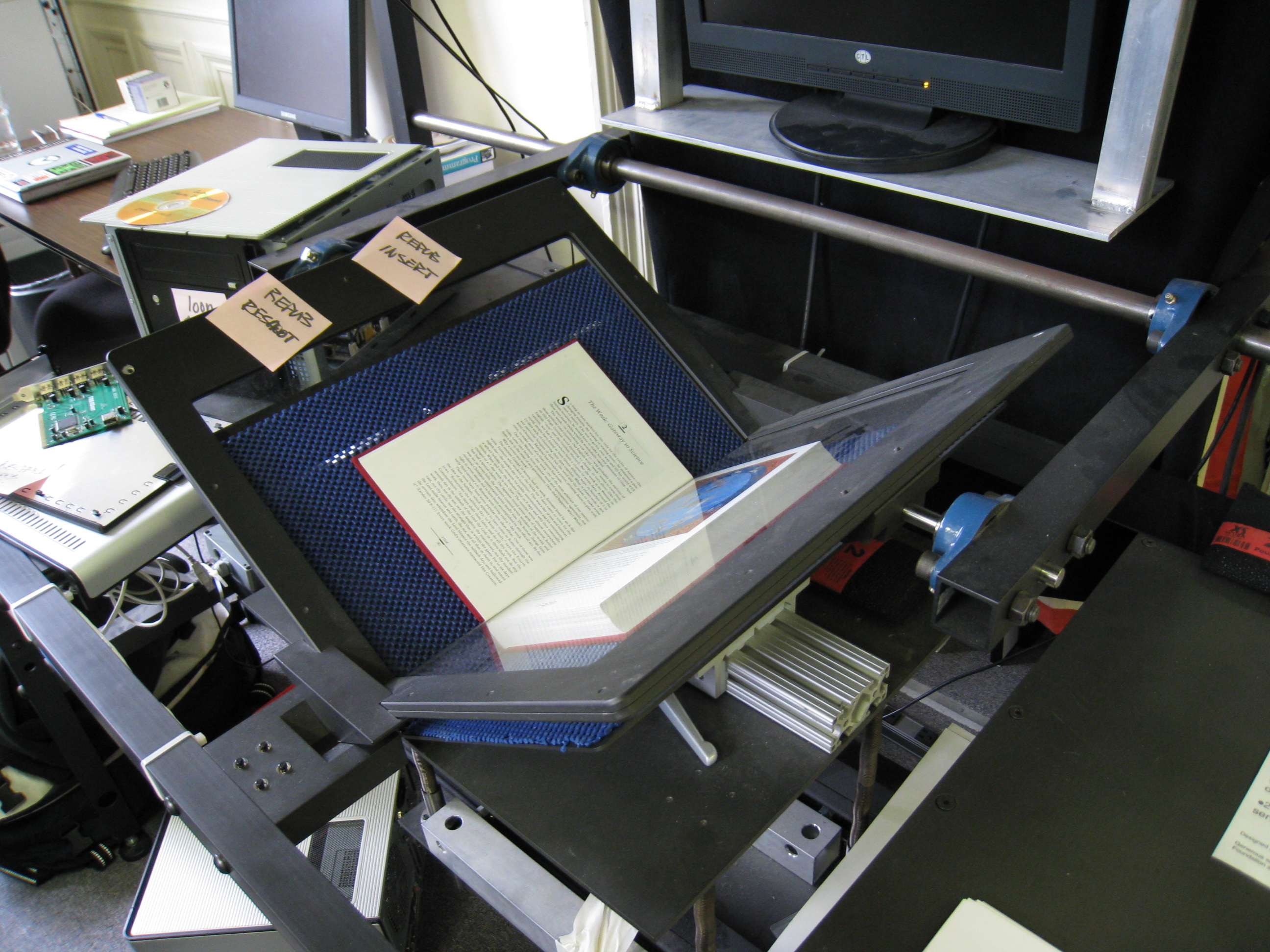|
Digital Artifactual Value
Digital artifactual value, a preservation term, is the intrinsic value of a digital object, rather than the informational content of the object. Though standards are lacking, born-digital objects and digital representations of physical objects may have a value attributed to them as artifacts. Intrinsic value in analog materials With respect to analog or non-digital materials, artifacts are determined to have singular research or archival value if they possess qualities and characteristics that make them the only acceptable form for long-term preservation.The National Archives Committee on Intrinsic Value. "Intrinsic Value In Archival Material." Staff Information Paper No. 21, 1982. These qualities and characteristics are commonly referred to as the item's intrinsic value and form the basis upon which digital artifactual value is currently evaluated. Artifactual value based on this idea is predicated upon the artifact's originality, faithfulness, fixity, and stability. The intri ... [...More Info...] [...Related Items...] OR: [Wikipedia] [Google] [Baidu] |
Preservation (library And Archival Science)
In Conservation and restoration of cultural property, conservation, Library science, library and archival science, preservation is a set of preventive conservation activities aimed at prolonging the life of a record, book, or object while making as few changes as possible. Preservation activities vary widely and may include monitoring the condition of items, maintaining the temperature and humidity in collection storage areas, writing a plan in case of emergencies, digitizing items, writing relevant metadata, and increasing accessibility. Preservation, in this definition, is practiced in a library or an archive by a Conservator-restorer, conservator, librarian, archivist, or other professional when they perceive a collection or record is in need of maintenance. Preservation should be distinguished from interventive Conservation and restoration of books, manuscripts, documents and ephemera, conservation and restoration, which refers to the treatment and repair of individual items ... [...More Info...] [...Related Items...] OR: [Wikipedia] [Google] [Baidu] |
Copying
Copying is the duplication of information or an wiktionary:artifact, artifact based on an instance of that information or artifact, and not using the process that originally generated it. With Analog device, analog forms of information, copying is only possible to a limited degree of accuracy, which depends on the quality of the equipment used and the skill of the operator. There is some inevitable generation loss, deterioration and accumulation of "noise (signal processing), noise" (random small changes) from original to copy when copies are made. This deterioration accumulates with each generation. With digital data, digital forms of information, copying is perfect. Copy and paste is frequently used by a computer user when they select and copy an area of text or content. In art In visual art, copying the works of the masters is a standard way that students learn to paint and sculpt. Often, artists will use the term ''after'' to credit the original artist in the title of the copy ... [...More Info...] [...Related Items...] OR: [Wikipedia] [Google] [Baidu] |
Ebooks
An ebook (short for electronic book), also spelled as e-book or eBook, is a book publication made available in electronic form, consisting of text, images, or both, readable on the flat-panel display of computers or other electronic devices. Although sometimes defined as "an electronic version of a printed book", some e-books exist without a printed equivalent. E-books can be read on dedicated e-reader devices, also on any computer device that features a controllable viewing screen, including desktop computers, laptops, tablets and smartphones. In the 2000s, there was a trend of print and e-book sales moving to the Internet, where readers buy traditional paper books and e-books on websites using e-commerce systems. With print books, readers are increasingly browsing through images of the covers of books on publisher or bookstore websites and selecting and ordering titles online. The paper books are then delivered to the reader by mail or any other delivery service. With e-book ... [...More Info...] [...Related Items...] OR: [Wikipedia] [Google] [Baidu] |
Digital Library
A digital library (also called an online library, an internet library, a digital repository, a library without walls, or a digital collection) is an online database of digital resources that can include text, still images, audio, video, digital documents, or other digital media formats or a library accessible through the internet. Objects can consist of digitization, digitized content like Printing, print or photography, photographs, as well as born-digital, originally produced digital content like word processor files or social media posts. In addition to storing content, digital libraries provide means for organizing, searching, and information retrieval, retrieving the content contained in the collection. Digital libraries can vary immensely in size and scope, and can be maintained by individuals or organizations. The digital content may be stored locally, or accessed remotely via computer networks. These information retrieval systems are able to exchange information with each ... [...More Info...] [...Related Items...] OR: [Wikipedia] [Google] [Baidu] |
Digitization
Digitization is the process of converting information into a digital (i.e. computer-readable) format.Collins Dictionary. (n.d.). Definition of 'digitize'. Retrieved December 15, 2021, from https://www.collinsdictionary.com/dictionary/english/digitize The result is the representation of an object, image, sound, document, or signal (usually an analog signal) obtained by generating a series of numbers that describe a discrete set of points or samples. The result is called ''digital representation'' or, more specifically, a ''digital image'', for the object, and ''digital form'', for the signal. In modern practice, the digitized data is in the form of binary numbers, which facilitates processing by digital computers and other operations, but digitizing simply means "the conversion of analog source material into a numerical format"; the decimal or any other number system can be used instead. Digitization is of crucial importance to data processing, storage, and transmission, bec ... [...More Info...] [...Related Items...] OR: [Wikipedia] [Google] [Baidu] |
Lorna M
Lorna is a feminine given name. The name is said to have been first coined by R. D. Blackmore for the heroine of his novel '' Lorna Doone'', which appeared in 1869. Blackmore appears to have derived this name from the Scottish placename ''Lorn''/'' Lorne''. In the U.S., according to the 1990 census, the name ranks 572 of 4275, and as a surname, Lorna ranks 62296 out of 88799. National Lorna day is held annually on 30 April. It originally started in Staffordshire but is now recognised worldwide. Notable people named Lorna * Lorna Anderson, Scottish soprano * Lorna Aponte, Panamanian rapper * Lorna Arnold, British historian of the UK's nuclear weapons programmes * Lorna Bennett, Jamaican reggae singer * Lorna Bogue, Irish politician * Lorna Boreland-Kelly, British magistrate and member of the Judicial Appointments Commission * Lorna Dee Cervantes, Chicana American poet * Lorna Cordeiro, singer from Goa, India * Lorna Jane Clarkson, Australian fashion designer, entrepreneur a ... [...More Info...] [...Related Items...] OR: [Wikipedia] [Google] [Baidu] |
Kenneth Thibodeau
Kenneth Francis Thibodeau (born 1945) is an American specialist in electronic records management who worked for many years at the National Archives and Records Administration (NARA). He was responsible for development of the pioneering DoD 5015.02 standard for electronic records management and for creation of NARA's Electronic Records Archives System (ERA). Life Background Kenneth Thibodeau was born in Cohoes, New York, United States, in 1945. He studied at Fordham University, where he received a bachelor's degree in history in 1967. He also studied at the University of Strasbourg in France. He went on to the University of Pennsylvania, where he obtained a PhD in history and sociology of science in 1974. Professional career In 1975 Charles M. Dollar hired Thibodeau to work in NARA's Machine Readable Archives Division. He joined a team that reviewed the electronic records of federal agencies to ensure they could be archived by NARA. He left NARA in 1978 to work as a records mana ... [...More Info...] [...Related Items...] OR: [Wikipedia] [Google] [Baidu] |
Digital Document
An electronic document is a document that can be sent in non-physical means, such as telex, email, and the internet. Originally, any computer data were considered as something internal—the final data output was always on paper. However, the development of computer networks has made it so that in most cases it is much more convenient to distribute electronic documents than printed ones. The improvements in electronic visual display technologies made it possible to view documents on a screen instead of printing them (thus saving paper and the space required to store the printed copies). However, using electronic documents for the final presentation instead of paper has created the problem of multiple incompatible file formats. Even plain text computer files are not free from this problem—e.g. under MS-DOS, most programs could not work correctly with UNIX-style text files (see newline), and for non-English speakers, the different code pages always have been a source of trou ... [...More Info...] [...Related Items...] OR: [Wikipedia] [Google] [Baidu] |
Library And Information Science
Library and information science (LIS)Library and Information Sciences is the name used in the Dewey Decimal Classification for class 20 from the 18th edition (1971) to the 22nd edition (2003). are two interconnected disciplines that deal with information management. This includes organization, access, collection, and regulation of information, both in physical and digital forms.Coleman, A. (2002)Interdisciplinarity: The Road Ahead for Education in Digital Libraries D-Lib Magazine, 8:8/9 (July/August). Library science and information science are two original disciplines; however, they are within the same field of study. Library science is applied information science. Library science is both an application and a subfield of information science. Due to the strong connection, sometimes the two terms are used synonymously. Definition Library science (previously termed library studies and library economy) is an interdisciplinary or multidisciplinary field that applies the practices, p ... [...More Info...] [...Related Items...] OR: [Wikipedia] [Google] [Baidu] |
Audit Trail
An audit trail (also called audit log) is a security-relevant chronological record, set of records, and/or destination and source of records that provide documentary evidence of the sequence of activities that have affected at any time a specific operation, procedure, event, or device. Audit records typically result from activities such as financial transactions, scientific research and health care data transactions, or communications by individual people, systems, accounts, or other entities. The process that creates an audit trail is typically required to always run in a privileged mode, so it can access and supervise all actions from all users; a normal user should not be allowed to stop/change it. Furthermore, for the same reason, the trail file or database table with a trail should not be accessible to normal users. Another way of handling this issue is through the use of a role-based security model in the software. The software can operate with the closed-looped controls, ... [...More Info...] [...Related Items...] OR: [Wikipedia] [Google] [Baidu] |





